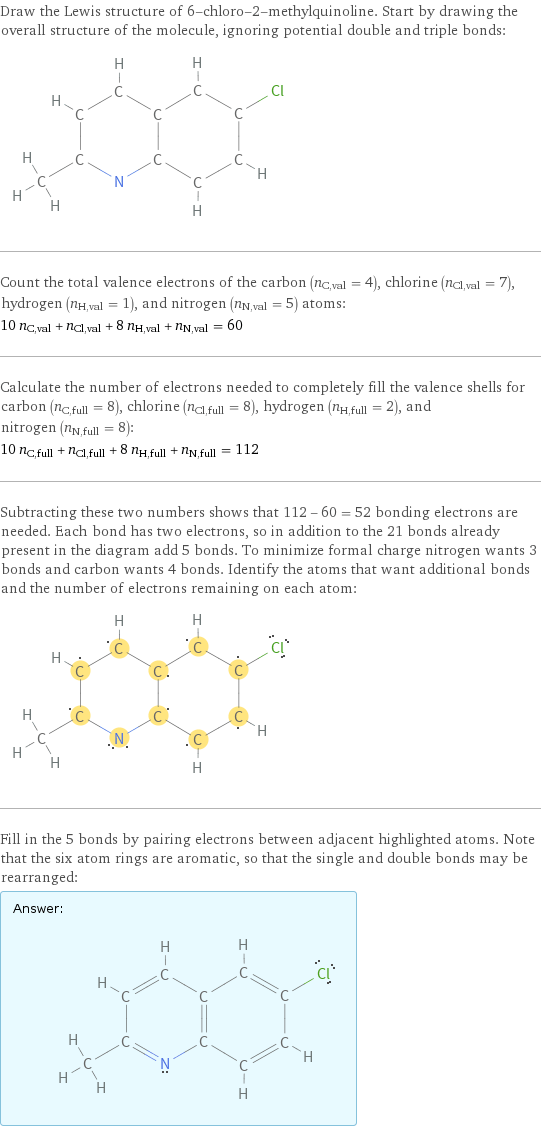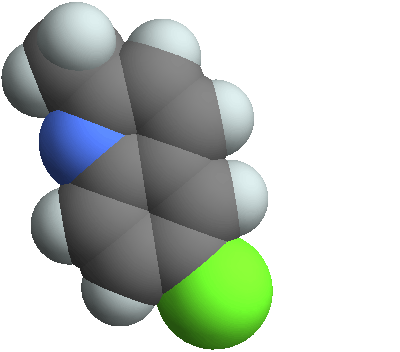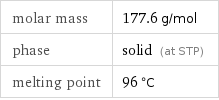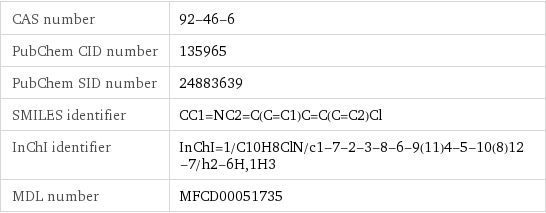Input interpretation

6-chloro-2-methylquinoline
Chemical names and formulas

formula | C_10H_8ClN name | 6-chloro-2-methylquinoline alternate names | 6-chloro-2-methyl-quinoline mass fractions | C (carbon) 67.6% | Cl (chlorine) 20% | H (hydrogen) 4.54% | N (nitrogen) 7.89%
Lewis structure

Draw the Lewis structure of 6-chloro-2-methylquinoline. Start by drawing the overall structure of the molecule, ignoring potential double and triple bonds: Count the total valence electrons of the carbon (n_C, val = 4), chlorine (n_Cl, val = 7), hydrogen (n_H, val = 1), and nitrogen (n_N, val = 5) atoms: 10 n_C, val + n_Cl, val + 8 n_H, val + n_N, val = 60 Calculate the number of electrons needed to completely fill the valence shells for carbon (n_C, full = 8), chlorine (n_Cl, full = 8), hydrogen (n_H, full = 2), and nitrogen (n_N, full = 8): 10 n_C, full + n_Cl, full + 8 n_H, full + n_N, full = 112 Subtracting these two numbers shows that 112 - 60 = 52 bonding electrons are needed. Each bond has two electrons, so in addition to the 21 bonds already present in the diagram add 5 bonds. To minimize formal charge nitrogen wants 3 bonds and carbon wants 4 bonds. Identify the atoms that want additional bonds and the number of electrons remaining on each atom: Fill in the 5 bonds by pairing electrons between adjacent highlighted atoms. Note that the six atom rings are aromatic, so that the single and double bonds may be rearranged: Answer: | |
3D structure

3D structure
Basic properties

molar mass | 177.6 g/mol phase | solid (at STP) melting point | 96 °C
Units

Chemical identifiers

CAS number | 92-46-6 PubChem CID number | 135965 PubChem SID number | 24883639 SMILES identifier | CC1=NC2=C(C=C1)C=C(C=C2)Cl InChI identifier | InChI=1/C10H8ClN/c1-7-2-3-8-6-9(11)4-5-10(8)12-7/h2-6H, 1H3 MDL number | MFCD00051735